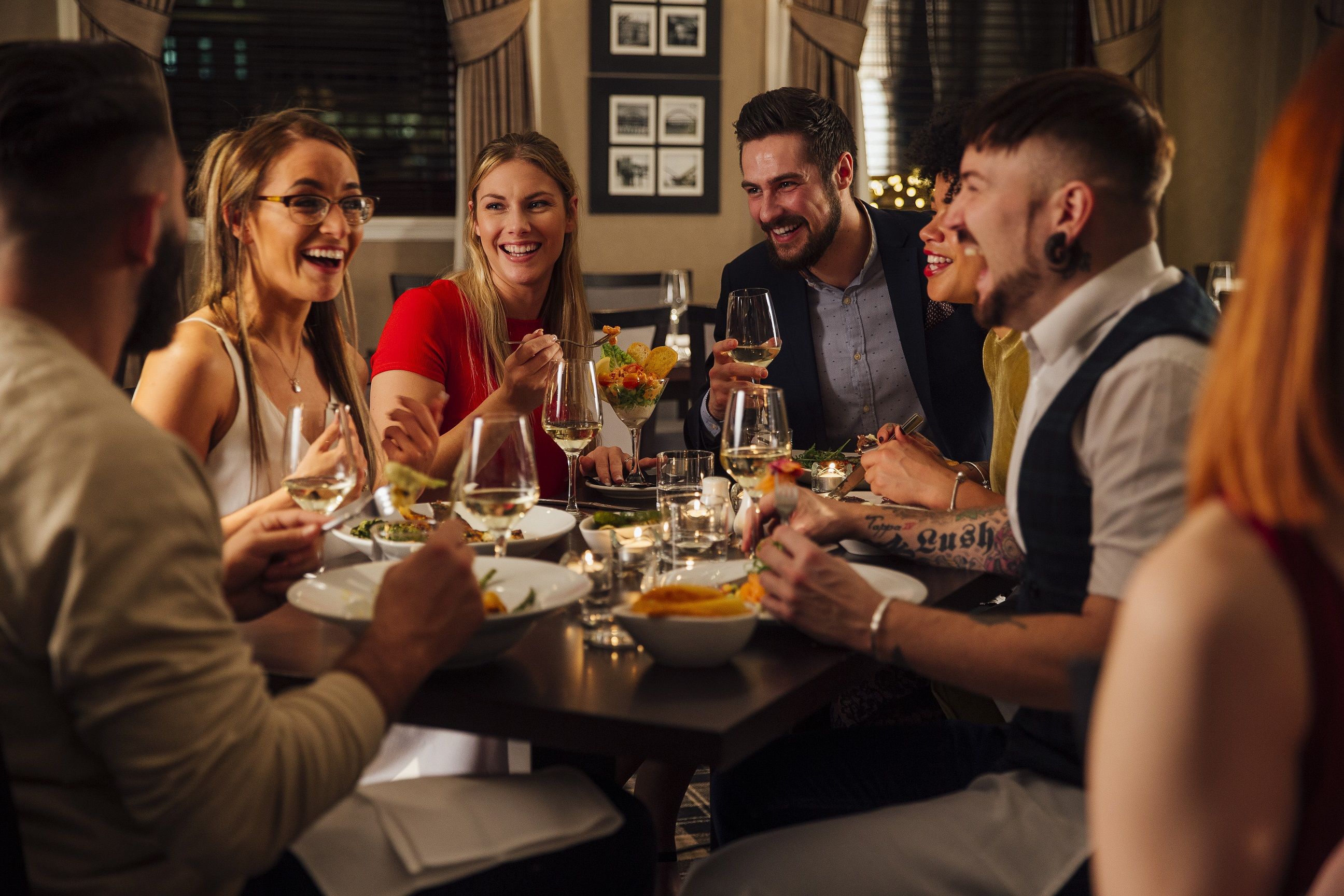Maximizing Your Meal: Tips for a Fantastic Dining Out Experience

Dining out represents one of life's most accessible luxuries, offering opportunities to escape routine, explore new flavors, and create lasting memories with friends and family. Yet many diners unknowingly limit their experiences by approaching restaurant visits with preconceived notions, rushed timelines, or missed opportunities for deeper engagement with the culinary artistry being presented. The difference between a merely satisfying meal and an extraordinary dining experience often lies in the preparation, mindset, and choices made before, during, and after the visit.
The modern dining landscape offers unprecedented variety and sophistication, with establishments ranging from casual neighborhood spots to elaborate culinary temples. Each venue provides unique opportunities for discovery and enjoyment, but maximizing these experiences requires understanding how to navigate different dining contexts, communicate effectively with service staff, and remain open to new possibilities. The most memorable meals often result from a combination of careful planning and spontaneous discovery.
Transforming routine dining into exceptional experiences involves developing awareness of the subtle elements that contribute to overall satisfaction. This includes understanding timing, atmosphere, menu navigation, service dynamics, and the art of savoring both familiar and unfamiliar flavors. These skills, once developed, enhance every dining experience regardless of venue, budget, or occasion.
Orchestrating Perfect Timing
The rhythm of dining experiences begins long before you arrive at your chosen venue, with timing decisions that can dramatically impact every aspect of your visit. Understanding peak service periods, seasonal menu changes, and optimal reservation strategies allows you to position yourself for the best possible experience while avoiding common pitfalls that can diminish enjoyment. Strategic timing extends beyond simply avoiding crowds to encompass menu availability, staff attention, and kitchen performance at different periods.
Early dining offers unique advantages that many diners overlook in their rush to secure prime-time reservations. Arriving during the first seating allows you to experience kitchens operating at their freshest, when ingredients are at peak quality and culinary teams are energized for the evening service. Service staff during early hours often have more time to provide detailed explanations, recommendations, and personalized attention that can significantly enhance your understanding and enjoyment of the meal.
Mid-week dining provides access to special menus, seasonal ingredients, and experimental dishes that chefs often reserve for less busy periods when they have time to focus on creativity rather than volume. Many establishments use slower periods to test new preparations, showcase premium ingredients, or offer limited-time specialties that regular weekend diners never encounter. This timing strategy proves particularly valuable when exploring venues known for their culinary innovation.
Late-night dining creates intimate atmospheres where the pace slows, conversations deepen, and the entire experience takes on a more relaxed character. Kitchens operating during these hours often showcase different skills, focusing on simpler preparations that highlight ingredient quality rather than complex techniques. The service dynamic shifts as well, with staff members who chose to work late often displaying genuine passion for hospitality rather than simply fulfilling job requirements.
Seasonal timing considerations can transform the same restaurant into completely different experiences throughout the year. Menu rotations, ingredient availability, and even service styles often change with seasons, providing returning diners with fresh discoveries. Understanding these cycles allows you to plan visits that coincide with your preferred ingredients, preparation styles, or atmospheric preferences.
Mastering Menu Navigation
The art of menu interpretation extends far beyond reading descriptions and prices to encompass understanding culinary terminology, recognizing preparation methods, and identifying opportunities for customization or special requests. Modern menus often reflect complex culinary philosophies, seasonal availability, and chef preferences that require careful consideration to fully appreciate. Developing skills in menu navigation transforms ordering from a potentially overwhelming task into an engaging exploration of culinary possibilities.
Reading between the lines of menu descriptions reveals information about preparation techniques, flavor profiles, and ingredient combinations that can guide informed choices. Terms like "slow-braised," "wood-fired," or "house-made" indicate specific approaches that affect both flavor development and dining timeline. Understanding these signals allows you to align your selections with your preferences for cooking methods, flavor intensity, and meal pacing.
Seasonal menu indicators often highlight the kitchen's commitment to ingredient quality and provide opportunities to experience items at their peak availability. Dishes marked as seasonal, market-driven, or featuring specific varietals typically represent the chef's current focus and passion. These selections often showcase the highest level of creativity and attention to detail, making them excellent choices for diners seeking exceptional experiences.
Cross-cultural menu elements require careful consideration to appreciate the authenticity and technique involved in their preparation. When establishments offer traditional dishes from specific regions or cultures, understanding the context and significance of these preparations enhances both respect for the cuisine and enjoyment of the flavors. This proves particularly relevant when exploring venues specializing in traditional preparations, where services like italian food catering san diego and similar authentic offerings showcase generations of culinary knowledge and technique.
Tasting menu options provide structured journeys through a chef's creative vision while removing the burden of individual selection. These experiences often include preparations, ingredients, or techniques not available through regular menu ordering. The progression, pacing, and flavor development designed into tasting experiences can reveal aspects of culinary artistry that individual dish ordering might miss.
Special dietary accommodations have evolved beyond simple substitutions to include creative adaptations that maintain the integrity and excitement of original dishes. Communicating specific requirements clearly while expressing openness to chef recommendations often results in customized preparations that exceed expectations. Many culinary teams view dietary restrictions as creative challenges that inspire innovative solutions.
Cultivating Curiosity and Openness
Approaching dining experiences with genuine curiosity and willingness to step outside comfort zones opens doors to discoveries that routine ordering patterns would never reveal. This mindset shift transforms meals from simple sustenance into educational and sensory adventures that expand palates, challenge preconceptions, and create lasting memories. The most transformative dining experiences often result from saying yes to unfamiliar ingredients, preparation methods, or flavor combinations.
Engaging with service staff as knowledgeable guides rather than order-takers unlocks access to insider information, special preparations, and personalized recommendations that can elevate any dining experience. Servers, bartenders, and sommeliers possess detailed knowledge about ingredients, preparation methods, and menu histories that they eagerly share with interested diners. Their insights often reveal hidden menu gems, optimal preparation timing, or pairing suggestions that significantly enhance meal enjoyment.
Embracing the unexpected requires releasing attachment to predetermined expectations and allowing the dining experience to unfold naturally. This might involve accepting substitutions when preferred ingredients are unavailable, trying recommended preparations that differ from initial plans, or exploring unfamiliar categories entirely. The flexibility to adapt plans often leads to serendipitous discoveries that become cherished memories.
Sharing plates and collaborative ordering multiply the variety of flavors experienced during a single visit while creating opportunities for discussion and comparison. This approach proves particularly valuable when exploring new cuisines, testing multiple preparation styles, or simply maximizing exposure to a kitchen's range of capabilities. The social aspect of sharing food often enhances enjoyment while creating shared reference points for future dining decisions.
Documenting experiences through notes, photos, or mental cataloging helps build a personal database of preferences, discoveries, and venues worth revisiting. This practice transforms individual meals into building blocks of culinary knowledge that inform future choices while preserving memories of exceptional experiences. The act of conscious attention required for documentation often heightens awareness and appreciation during the meal itself.
Building Lasting Relationships
Developing ongoing relationships with preferred establishments creates mutual benefits that enhance every visit while supporting the venues and staff members who contribute to memorable experiences. Regular patronage allows service staff to learn preferences, dietary restrictions, and special occasions, enabling them to provide increasingly personalized service that reflects genuine care and attention. These relationships often result in access to special preparations, advance notice of menu changes, or reserved access during busy periods.
Expressing appreciation for exceptional service, outstanding dishes, or memorable experiences encourages the continuation of high standards while recognizing the human effort involved in creating superior dining experiences. This appreciation can take many forms, from verbal compliments and written reviews to appropriate gratuities and referrals to friends and colleagues. The hospitality industry thrives on positive feedback that validates the dedication required to excel in demanding service roles.
Constructive feedback, when delivered respectfully and specifically, helps establishments improve while demonstrating genuine investment in their success. Addressing concerns directly with management rather than simply avoiding future visits provides opportunities for resolution while contributing to overall quality improvement. Many venues welcome honest feedback from regular customers who clearly care about the establishment's reputation and success.
Participating in special events, wine dinners, cooking classes, or other educational offerings deepens connections with venues while expanding culinary knowledge and appreciation. These experiences often provide behind-the-scenes access to kitchens, direct interaction with chefs, and exposure to preparation techniques that regular dining doesn't reveal. The relationships formed during these special events often enhance future visits through increased mutual recognition and shared experiences.
Savoring the Complete Experience
Maximizing dining experiences requires embracing the entire journey rather than focusing solely on the food itself. The atmosphere, service interactions, conversation quality, and even the transition back to daily life all contribute to the lasting impression and overall satisfaction derived from the experience. Developing awareness of these peripheral elements while maintaining focus on culinary excellence creates more complete and memorable dining adventures.
Creating appropriate time boundaries around dining experiences allows for full engagement without external pressures or distractions. This might involve turning off mobile devices, arriving without immediate post-meal obligations, or simply committing to being present throughout the experience. The quality of attention brought to dining directly impacts the depth of enjoyment and memory formation.
The journey home and reflection period following exceptional meals often prove as important as the dining experience itself. This time allows for processing flavors, discussing highlights with dining companions, and integrating new discoveries into personal culinary knowledge. Many diners find that their appreciation for exceptional meals actually increases during this reflection period as they recognize subtle elements that weren't immediately apparent.
Understanding that each dining experience contributes to an ongoing education in flavors, techniques, and cultural traditions transforms individual meals into components of a larger journey of discovery. This perspective encourages experimentation, patience with unfamiliar elements, and appreciation for the craftsmanship involved in professional food preparation. The accumulation of diverse dining experiences creates a foundation for increasingly sophisticated appreciation and enjoyment of culinary artistry.
Exceptional dining experiences result from the intersection of preparation, openness, timing, and genuine appreciation for the artistry involved in professional food service. By approaching each meal as an opportunity for discovery, building relationships with service professionals, and maintaining curiosity about unfamiliar flavors and techniques, diners can transform routine restaurant visits into memorable adventures that nourish both body and spirit. The investment in developing these skills pays dividends in enhanced enjoyment, expanded palates, and a deeper appreciation for the dedication required to create truly exceptional dining experiences.
Note: IndiBlogHub features both user-submitted and editorial content. We do not verify third-party contributions. Read our Disclaimer and Privacy Policyfor details.







